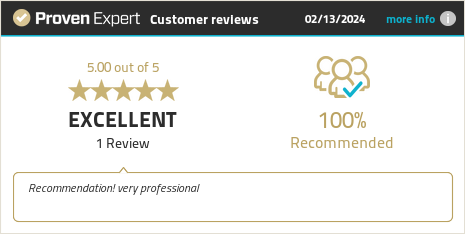Web development has become an integral part of modern businesses and organizations. As technology continues to advance, the need for seamless integration between different systems and platforms has become paramount. This is where REST API comes into play. REST API, short for Representational State Transfer Application Programming Interface, is a powerful tool enabling communication and data exchange between software applications over the internet.
Understanding the Basics of Web Development
Before diving into the world of REST API, it is essential to understand the basics of web development. Web development refers to the process of creating websites or web applications that can be accessed and used by users through the internet. It involves various components such as front-end development, back-end development, database management, and server configuration. A well-rounded understanding of web development principles and technologies will provide a solid foundation for utilizing REST API effectively.
What is a REST API and How Does it Work?
REST API is an architectural style for designing networked applications. It follows a set of principles and constraints that make it scalable, flexible, and easy to use. REST API works by using HTTP methods such as GET, POST, PUT, and DELETE to perform various operations on resources. These resources can be anything from data records to images, files, or even other API endpoints. REST API relies on a stateless client-server communication model, where each request from the client contains all the necessary information for the server to process and respond accordingly.
Benefits of Using REST API in Web Development
The adoption of REST API in web development offers numerous benefits. First and foremost, it enables seamless integration between different systems and platforms. REST API allows applications to communicate and share data in a standardized and efficient manner, regardless of the programming languages or technologies used. This opens up endless possibilities for creating powerful and interconnected web applications.
Another significant advantage of REST API is its scalability. RESTful architectures are designed to be highly scalable, allowing applications to handle a large number of concurrent requests without compromising performance. This makes REST API suitable for building web applications that cater to a growing user base or handle heavy traffic.
Furthermore, REST API promotes loose coupling between systems. By separating the user interface from the underlying data and business logic, REST API allows for independent development and deployment of different components. This enhances flexibility and maintainability, as changes made to one component do not necessarily affect others.
Examples of Popular REST API Integrations
REST API is widely adopted and used by many popular platforms and services. Some notable examples include:
- Twitter API: The Twitter API allows developers to access and interact with Twitter’s vast collection of data. It enables applications to post tweets, retrieve user profiles, search for tweets, and much more.
- Google Maps API: The Google Maps API provides developers with access to powerful mapping and geolocation functionalities. It allows applications to display maps, calculate directions, and perform geocoding operations.
- PayPal API: The PayPal API enables developers to integrate PayPal’s payment processing capabilities into their web applications. It allows users to make payments, receive payments, and manage their PayPal accounts seamlessly.
These examples showcase the versatility and potential of REST API in various domains, ranging from social media to e-commerce and beyond.
Implementing REST in Web Development Projects
Implementing REST API in web development projects requires careful planning and consideration. Here are some essential steps to follow:
- Identify the resources: Determine the data or functionalities that need to be exposed through the API. This could be user profiles, product listings, order management, or any other relevant information.
- Define endpoints: Design the API endpoints that represent the resources. Each endpoint should have a unique URL and correspond to a specific operation or action.
- Choose HTTP methods: Assign the appropriate HTTP methods (GET, POST, PUT, DELETE) to each endpoint based on the desired functionality. For example, GET for retrieving data, POST for creating new resources, PUT for updating existing resources, and DELETE for removing resources.
- Implement authentication and security: Decide on the authentication mechanism to secure the API and protect sensitive data. This could involve using API keys, tokens, or OAuth.
- Test and document the API: Thoroughly test the API endpoints to ensure they function as intended. Additionally, provide comprehensive documentation to guide developers on how to use the API effectively.
By following these steps, developers can successfully implement REST API in their web development projects, enabling seamless integration and data exchange.
Best Practices for Using REST in Web Development
To make the most out of REST API in web development, it is crucial to follow best practices. Here are some key recommendations:
- Use descriptive and consistent naming conventions for endpoints and resources. This enhances readability and maintainability.
- Leverage appropriate HTTP status codes to indicate the success or failure of API requests. For example, 200 for successful retrieval, 201 for successful creation, and 404 for resource not found.
- Implement versioning to ensure backward compatibility when making changes to the API. This allows existing clients to continue using the old version while new clients can adopt the latest version.
- Optimize API responses by implementing pagination, filtering, and sorting mechanisms. This helps manage large datasets and improves performance.
- Implement caching mechanisms to reduce the load on the server and improve response times. This can be achieved through HTTP caching headers or implementing a dedicated caching layer.
Following these best practices will contribute to the overall efficiency and reliability of REST API implementations in web development projects.
Tools and Resources
Several tools and resources are available to assist developers in working with REST API. These include:
- Postman: Postman is a popular API development and testing tool that allows developers to create, test, and document APIs. It provides a user-friendly interface for making API requests and inspecting responses.
- Swagger: Swagger is an open-source framework for designing, building, and documenting APIs. It provides a set of tools for creating interactive API documentation and generating client SDKs.
- RESTful API Modeling Language (RAML): RAML is a vendor-neutral specification language for designing REST APIs. It allows developers to define API contracts and generate server stubs or client SDKs automatically.
- RESTful API Design Guidelines: Various online resources and guidelines offer best practices and design principles for building RESTful APIs. These include the API Stylebook, the Microsoft REST API Guidelines, and the Google API Design Guide.
By utilizing these tools and resources, developers can streamline the development and maintenance of REST API in their web development projects.
Common Challenges and How to Overcome Them
While REST API offers numerous benefits, it also presents some challenges that developers may encounter. Here are a few common challenges and strategies to overcome them:
- Authentication and security: Implementing robust authentication and security measures can be complex. To overcome this challenge, leverage existing authentication frameworks, such as OAuth, and adopt industry best practices for securing API endpoints.
- Versioning and backward compatibility: As the API evolves and undergoes changes, maintaining backward compatibility can be challenging. To address this, implement versioning strategies, such as using version numbers in the API URL or utilizing content negotiation headers.
- Scalability and performance: Handling a large number of concurrent requests and ensuring optimal performance can be demanding. Employ caching mechanisms, optimize database queries, and consider load balancing techniques to scale the API infrastructure.
- Error handling and logging: Properly handling errors and logging relevant information is crucial for troubleshooting and debugging. Implement a comprehensive error handling strategy and log meaningful error messages for efficient issue resolution.
By being aware of these challenges and implementing appropriate strategies, developers can overcome obstacles and maximize the potential of REST API in their web development projects.
Conclusion
REST API has revolutionized the way web applications communicate and interact with each other. Its ability to enable seamless integration, scalability, and loose coupling between systems makes it an indispensable tool in modern web development. By understanding the basics of web development, implementing best practices, and leveraging the right tools and resources, developers can harness the power of REST API to unlock the full potential of seamless integration. So, book a meeting with us to start your project or contact us , and embark on a journey of building powerful and interconnected web applications.












